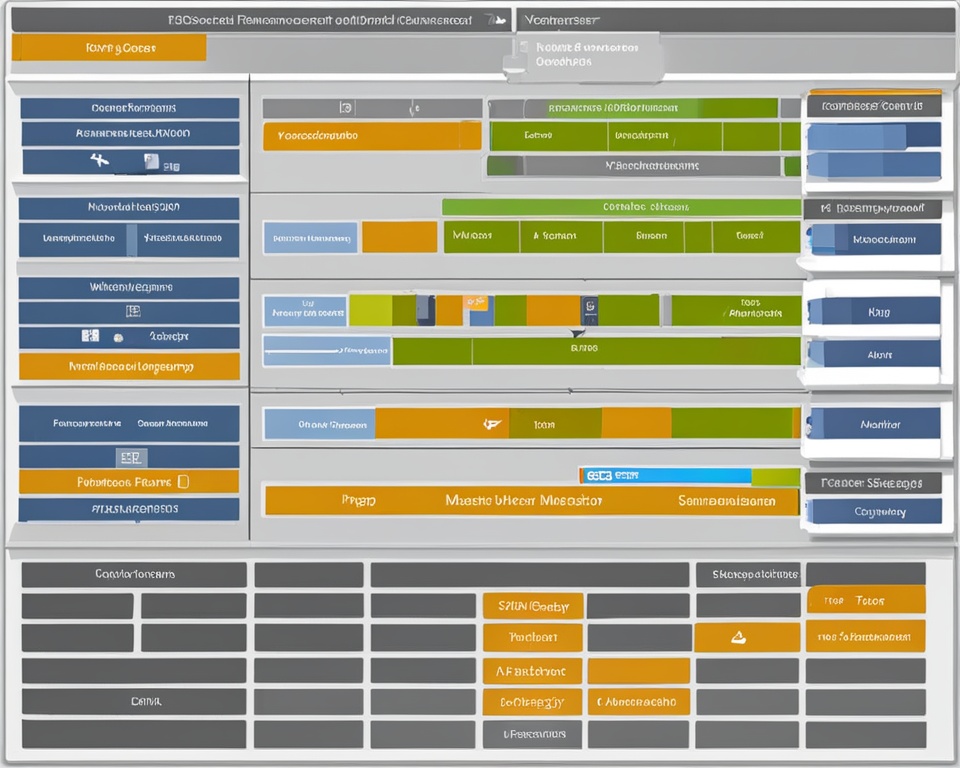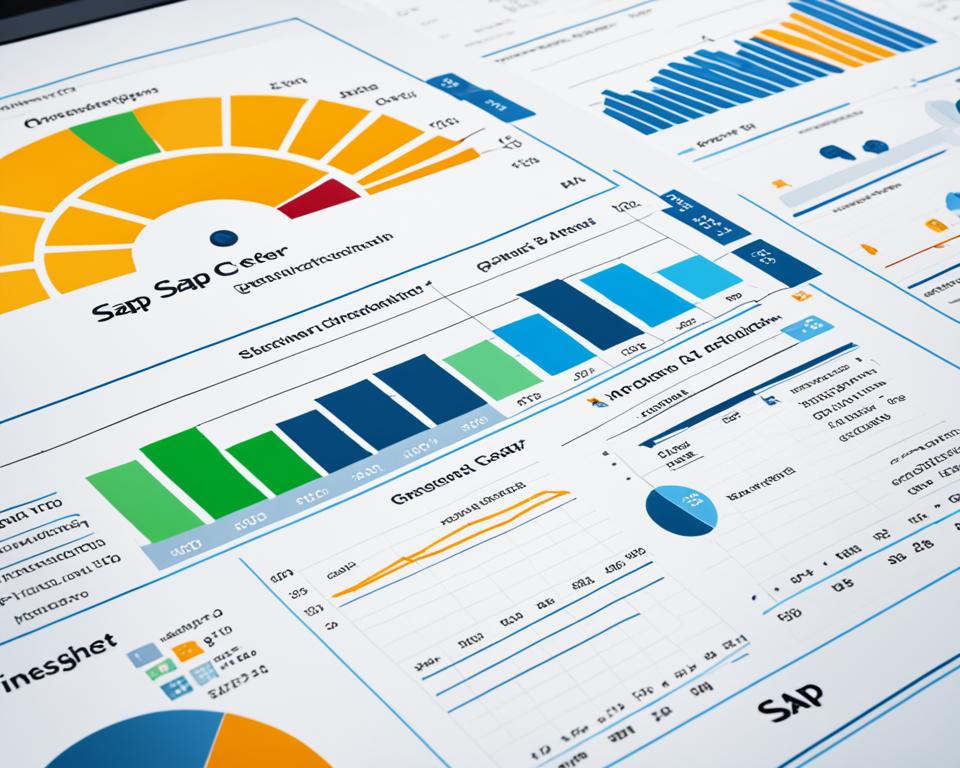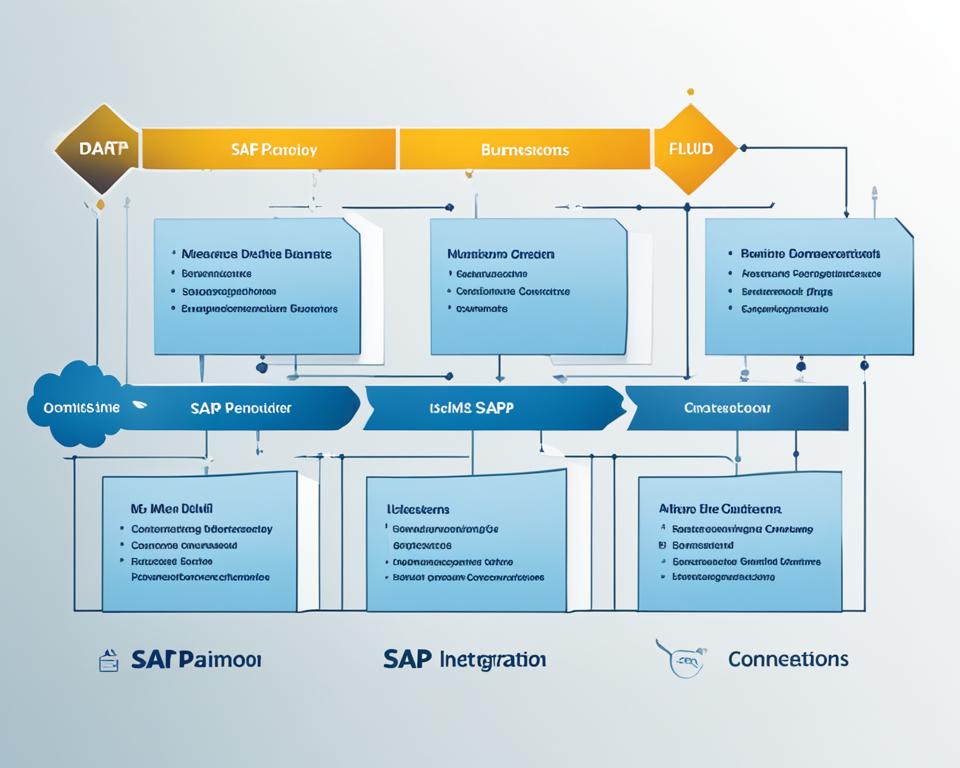Have you ever thought about how your organization’s data is protected? In today’s world, having strong data management strategies is key. I’ll show you how SAP Information Lifecycle Management (ILM) changes the game in data governance. With the right approach, you can meet compliance, keep data safe, and make your operations better.
Key Takeaways
- SAP ILM is crucial for effective data governance in modern enterprises.
- Implementing data management strategies enhances compliance and data integrity.
- Understanding data lifecycles is key to optimizing retention policies.
- Data governance frameworks are essential for navigating regulatory landscapes.
- Strategic use of SAP ILM leads to improved data efficiency.
- Challenges in data governance highlight the need for integrated management approaches.
Introduction to Data Governance
Data governance is a key method for managing data well. It makes sure data is available, useful, correct, and safe. It means setting up clear rules on how data is made, kept, and used in a company. As companies use data more for making decisions, having strong data management is very important.
Good data governance keeps data in line with laws and helps meet business goals. It brings together people from different areas to work together better. Important parts include:
- Data Stewardship – Giving people specific jobs to keep data quality up.
- Data Quality Management – Making sure data is correct and reliable.
- Policy Development – Setting rules for how data is used and followed.
This way, companies become more responsible and can handle data rules better. This helps them use their data well and avoid problems with not following the rules.
| Aspect | Description | Importance |
|---|---|---|
| Availability | Ensuring data is accessible to authorized users when needed | Facilitates timely decision-making |
| Usability | Guaranteeing data is understandable and usable for its intended purpose | Enhances operational efficiency |
| Integrity | Maintaining accuracy and consistency of data over its lifecycle | Builds trust in data-derived insights |
| Security | Protecting data from unauthorized access and breaches | Mitigates risks and ensures compliance |
The Importance of Data Governance in Modern Enterprises
In today’s fast-paced business world, data governance is more important than ever. Companies must focus on following data rules and understanding laws to keep their operations safe. Having a strong governance plan is key to lowering risks and staying compliant. Regulations like GDPR and HIPAA show how crucial it is to follow the rules.
Understanding Data Compliance and Regulatory Needs
Data compliance means following laws about how to use data. Companies must make sure their data use matches legal standards to avoid big fines. Since different industries have different rules, it’s key for businesses to keep up with the latest laws. Not following these rules can lead to big financial losses and harm a company’s reputation. This highlights the importance of a good data governance plan.
Challenges Faced Without Data Governance
Not having a strong data governance plan brings many problems to a company. One big issue is data silos, which stop good communication and sharing of data. Bad data management makes things less efficient, slowing down work and making it hard to make decisions. Also, without a plan, companies are more likely to have data breaches, which can hurt customer trust and operations.
| Challenges | Description |
|---|---|
| Data Silos | Isolated data systems that prevent access to valuable information |
| Inefficiencies | Poor data handling processes that limit productivity |
| Increased Breach Risks | Greater vulnerability to data breaches due to lack of oversight |
Creating good data governance can solve these problems. It helps build a culture of following the rules and working efficiently in today’s businesses.
What is SAP ILM?
SAP Information Lifecycle Management (ILM) helps organizations manage data from start to finish. It makes handling data easier, from creation to deletion. This approach helps companies follow rules and work more efficiently.
Overview of Information Lifecycle Management
ILM is about managing data creation, upkeep, archiving, and deletion. With SAP ILM, companies can sort data by its importance. This way, important data gets the right protection, and less important data can be saved or deleted.
The lifecycle includes these phases:
- Data Creation
- Data Maintenance
- Data Archiving
- Data Deletion
Key Components of SAP ILM
Knowing the main parts of SAP ILM is key for good data management. The main parts are:
- Data Retention Policies: These set how long and why different data types must be kept.
- Data Archiving: This keeps old data safe but still lets you access it later.
- Secure Data Destruction: Once it’s time, data is deleted safely to keep it from being misused.
The Role of SAP ILM in Data Retention Strategies
SAP ILM is key to making good data retention plans. It sets clear rules on how long data should be kept. These rules help meet legal standards and manage risks from keeping data. It’s important to have clear rules for storing data to follow laws and keep sensitive info safe.
Defining Data Retention Policies
Data retention policies are like rules for keeping or deleting data. With SAP ILM, companies can make these rules fit their needs. This way, they can sort data well and meet both legal and business needs.
Benefits of Implementing Data Retention with SAP ILM
Using SAP ILM for data retention has many benefits:
- Improved Data Accuracy: Regular checks and deleting old data make the info better.
- Reduced Storage Costs: Getting rid of unneeded data cuts down on storage costs.
- Enhanced Data Security: Keeping only important data lowers risks of unauthorized access and data breaches.

Enhancing Data Archiving with SAP ILM
Data archiving is key for handling big datasets in companies. Using SAP ILM boosts archiving, making it more efficient and following rules. It automates archiving, helping companies keep data safe and follow laws.
Best Practices for Data Archiving
Here are some top tips for better data archiving:
- Assess Data Usage: Sort data by how often it’s used to see what can be archived.
- Implement Retention Policies: Make sure archiving fits with your company’s rules to stay legal.
- Schedule Timely Archiving: Use automated schedules for archiving to keep data moving fast.
- Monitor Archived Data: Keep an eye on who accesses archived data to make sure it works well.
How Archiving Contributes to Compliance
Good archiving practices help manage data well and follow the law. With SAP ILM, companies can manage archives well, keeping data long enough but still easy to get back. This careful archiving helps avoid legal problems, keeping the company strong.
Data Lifecycle Management through SAP ILM
Data lifecycle management means looking after data from the moment it’s made to when it’s deleted. SAP ILM helps organizations manage their data better with automated steps. This keeps data correct, safe, and follows the rules at every step.
Learning about SAP ILM helps me manage data well. It offers a clear way to handle data, making sure everything works smoothly. This method not only makes things run better but also helps follow the rules, making a strong framework for compliance.
Combining data lifecycle management with SAP ILM makes setting and following policies easier. It’s key to know how to handle different types of data. This way, managing data becomes less risky, keeping it in control as it changes over time.
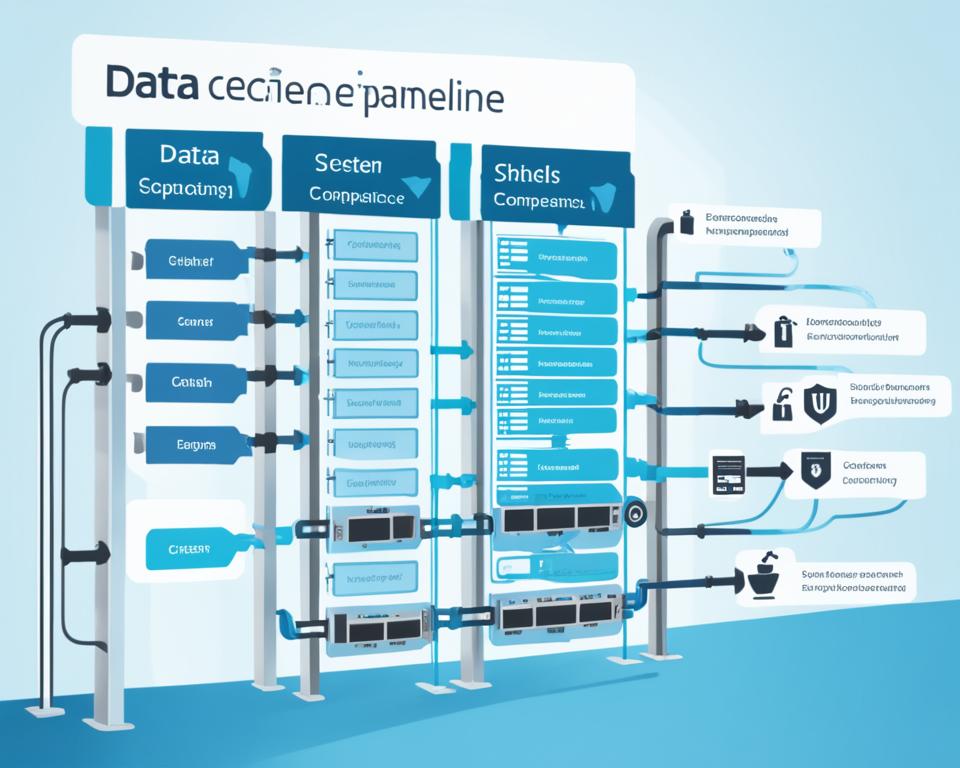
To show how SAP ILM helps with data lifecycle management, I’ve made a table:
| Component | Description | Benefits |
|---|---|---|
| Automated Workflows | Streamlined procedures from data creation to deletion. | Reduced manual effort and errors. |
| Data Consistency | Ensures uniform data formats and records. | Enhanced data accuracy and reliability. |
| Compliance Management | Supports regulatory requirements across jurisdictions. | Avoids penalties and ensures readiness for audits. |
| Data Archiving | Separates non-active data from live databases. | Improves system performance and reduces costs. |
To get better at managing data lifecycle with SAP ILM, I keep learning. I suggest checking out this guide on ABAP Dictionary. It’s full of useful info for making data processes better for governance and following the rules.
Integrating SAP ILM with SAP NetWeaver
Combining SAP ILM with SAP NetWeaver makes managing data easier across systems. It ensures data is handled well, making sure everything follows rules. This mix helps data move smoothly, boosting system speed and meeting rules.
Benefits of Integration
Putting SAP ILM and SAP NetWeaver together offers big benefits for companies:
- Seamless Data Transfer: Data moves easily between apps, cutting down on extra data.
- Improved System Performance: This combo makes processes faster and more efficient across the company.
- Enhanced Data Governance: It makes managing data better, important for following the law.
Technical Considerations and Setup
For a successful merge, think about these tech points:
- Compatibility: Make sure SAP ILM works well with your SAP NetWeaver version.
- Configuration Processes: Knowing how to set it up can help avoid problems.
- Testing: Testing well is key to make sure everything works as planned.
Linking SAP ILM with SAP NetWeaver offers big perks. It helps companies keep their data management strong. For more on SAP ERP and ABAP, check out this resource.
| Integration Aspect | Benefits | Considerations |
|---|---|---|
| Data Transfer | Seamless and efficient | Compatibility with existing systems |
| Performance | Enhanced speed and efficiency | Thorough configuration required |
| Data Governance | Stronger compliance and control | Rigorous testing recommended |
Maximizing Data Management Efficiency
Improving data management efficiency is key to being top-notch. By using smart methods, companies can get better at handling their data. This means not just managing data well but also making sure the processes around it are smooth.
Streamlining Data Processes
Using SAP ILM to streamline processes helps with automation and better organization. It makes workflows simpler and cuts down on time spent on data tasks. With clear steps, teams can get data faster, make fewer mistakes, and have a unified data plan that lowers stress.
Reducing Data Redundancy
Getting rid of data redundancy is another big step in improving data management. Having lots of data copies in different places can increase costs and mess up data quality. By having one main source of truth, companies can make sure decisions are based on correct, current info. This focus on quality makes data management easier and helps with making good decisions.

The Intersection of Information Governance and SAP ILM
It’s key for any business to understand information governance to manage its data well. This approach makes sure data is handled right, meets company goals, and follows the law. Knowing these principles helps with better data handling.
Understanding Information Governance Principles
Information governance covers a wide range of rules and steps to manage data. It includes things like being accountable, open, honest, safe, and following the law. These ideas help organizations make better decisions and build trust with people outside the company.
How SAP ILM Supports Governance Frameworks
SAP ILM is crucial for strengthening governance frameworks. It offers tools that help follow the law, manage data better, and enforce data policies. This makes sure companies keep their data safe and follow the rules. With SAP ILM, businesses can handle their data well, promoting a culture of being responsible with data. For more on how SAP Ariba Modules improve procurement and supply chain collaboration, check out this link.
Using SAP ILM for Enterprise Content Management
SAP ILM is key in enterprise content management. It helps me manage my content better. I can organize, store, and find content easily in my company.
It makes sure all content follows data governance rules. This keeps things in line with the law and makes work more efficient. It also makes finding and managing content better, keeping data structured and easy to get to.

Using SAP ILM means I can manage content from start to finish. I can sort content and set rules for how long it’s kept. This helps with data governance and lowers the chance of losing or mismanaging data. For custom reporting, SAP ILM makes sure my data handling is top-notch.
By using SAP ILM for enterprise content management, I can manage content in a smart way. It helps me follow the rules and sets a strong data governance system in my company.
Records Management with SAP ILM
Managing records well is key for businesses to run smoothly and follow the law. SAP ILM helps me keep records in check from start to finish. This means keeping, finding, and safely getting rid of records, which is vital for handling data right.
Establishing Effective Records Management Policies
To make a strong records management plan, I set clear rules on how to handle records in the company. These rules cover:
- Retention schedules that say how long records need to be kept for their value and the law.
- Access controls to keep sensitive records safe from people who shouldn’t see them and prevent data leaks.
- Audit trails that record what’s done with records, helping with accountability and openness.
Using SAP ILM makes these processes easier to automate, making following the rules much simpler.
Compliance Benefits of Proper Records Management
Good records management boosts efficiency and brings big compliance wins. These benefits are:
| Compliance Benefit | Description |
|---|---|
| Risk Mitigation | Less chance of data theft and rule breaks by handling records right. |
| Regulatory Alignment | Makes sure records follow industry laws, avoiding fines and penalties. |
| Enhanced Data Governance | Helps with big data plans by setting clear rules and keeping data true. |
Today, managing records well is crucial for businesses. Companies that focus on records with SAP ILM get ahead and follow the rules. For more tips on working better with suppliers and improving records management, check out useful resources.
Implementing SAP ILM in Your Organization
Implementing SAP ILM needs a careful plan. This ensures your company smoothly adds information lifecycle management to its daily work. Knowing the steps helps you tackle the challenges of this powerful tool.
Steps to Successful Implementation
To make SAP ILM work well, follow these steps:
- Assess Current Data Management Practices: Look at how you manage data now to see what needs to change.
- Define Clear Objectives: Set clear goals for SAP ILM that match your business aims.
- Secure Necessary Resources: Make sure you have enough money and people to make it work.
- Engage Stakeholders: Get important people from different departments involved early to build support.
- Train Employees: Teach everyone how to use the new systems and processes.
Common Pitfalls and How to Avoid Them
Knowing the common problems can help you avoid them:
- Underestimating System Complexity: Remember, SAP ILM has complex settings that need careful planning and doing.
- Neglecting Stakeholder Engagement: Not keeping important people informed can cause resistance and slow things down.
- Inadequate Change Management: Use a strong change management plan to help your team adjust easily.
- Ignoring Post-Implementation Review: Regularly check on the system after it’s up to spot problems and improve it.
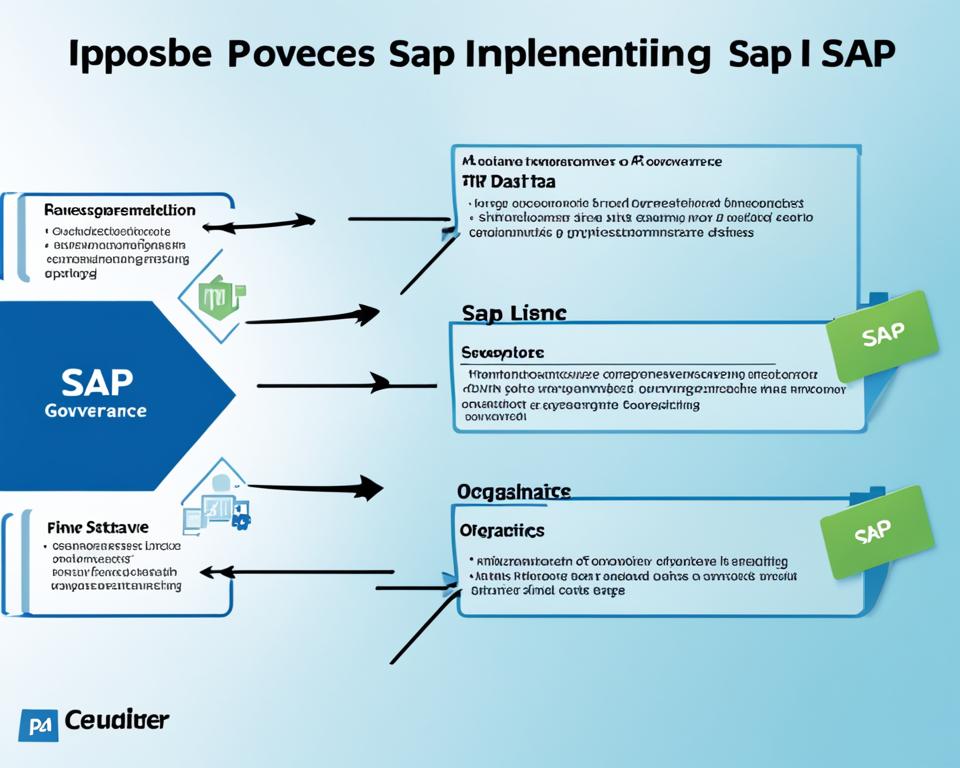
Best Practices for Maintaining Data Compliance
Keeping data safe and following the rules is key for companies. To do this, I suggest several best practices. These make sure data handling is clear and works well.
First, regular audits are a must. They spot any compliance issues early and fix them quickly. Also, it’s important to collect only the data needed for business. This reduces risk and makes data handling simpler.
SAP ILM helps keep up with compliance by offering tools for constant checks. This lets me quickly adjust to new rules. Keeping a detailed record of how data is used is also crucial. It shows compliance to auditors and regulators.
Here’s how an organization can follow best practices for data compliance:
| Best Practice | Description | Benefits |
|---|---|---|
| Regular Audits | Periodic reviews of data management processes to identify compliance gaps. | Helps in detecting issues early, ensuring proactive measures. |
| Data Minimization | Collecting and retaining only the necessary data for business functions. | Reduces risk exposure and simplifies data management. |
| Utilizing SAP ILM | Leveraging SAP ILM tools for ongoing compliance monitoring and adaptation. | Facilitates meeting regulatory requirements efficiently and systematically. |
By using these best practices, I can help my organization with data compliance. Being alert and taking action early helps avoid big compliance problems. This is good for the organization in the long term.
Measuring the Success of SAP ILM Initiatives
It’s key for organizations to know how well SAP ILM initiatives work. Tracking key performance indicators (KPIs) helps see if these efforts are effective. It also checks if they follow data governance rules.
Key Performance Indicators to Watch
It’s important to watch certain performance indicators to check SAP ILM initiatives. Key KPIs include:
- Data Compliance Rates: See how much data meets rules.
- System Performance Improvements: Watch how fast and efficient the system is.
- User Satisfaction Levels: Find out what users think of managing data.
Checking these indicators often shows where to get better. It helps make data governance strategies better.
Continuous Improvement Strategies
Always looking to get better is key for SAP ILM initiatives. Good strategies are:
- Regular checks of data management to find problems.
- Talking to stakeholders to make managing data better.
- Using advanced analytics for deeper insights into data.
By always improving, organizations can meet their data goals better. This makes managing data better overall.
Future Trends in Data Governance and SAP ILM
The world of data governance is changing fast, thanks to new trends. These trends include the use of artificial intelligence and machine learning. They will change how companies handle their data.
These technologies will make tasks easier and improve data quality. They will also cut down on manual work.
Advanced analytics in SAP ILM are key to this change. They give insights into how data is used. This helps companies use data better and follow rules easier.
Data is growing fast, making strong data governance more important. Companies that follow these trends will be ready for data privacy and security issues. SAP ILM will help them keep control of their data and improve their governance.
Conclusion
SAP ILM offers powerful tools that make data governance and compliance easier for modern businesses. It helps with data retention, archiving, and managing its lifecycle. This leads to better efficiency and security in how we handle data.
Knowing how SAP ILM helps with data governance lets me make smart choices for my business. By using these advanced tools, I can manage my data better. This reduces risks and helps follow industry rules.
To learn more about improving procurement and managing data, check out this resource on SAP Ariba. It will give me more ways to improve data governance for my business’s future success.
FAQ
What is SAP ILM and how does it support data governance?
SAP Information Lifecycle Management (ILM) is a solution for managing data from start to finish. It helps with data governance by setting data retention rules, automating archiving, and following laws. This makes data management better.
Why is data retention important in enterprise data management?
Data retention is key because it controls how long data is kept. It ensures following laws like GDPR and HIPAA. Good retention policies reduce risks, cut storage costs, and keep data accurate and safe.
How does SAP ILM enhance data archiving practices?
SAP ILM makes archiving better by automating it and following retention rules. This keeps less-used data safe and in line with laws. It also makes sure important data can be found when needed.
What are the best practices for records management using SAP ILM?
Best practices for SAP ILM include setting clear policies for records, automating when to keep or delete data, and keeping sensitive data secure. This lowers risks and avoids fines from laws.
What challenges might organizations face without a robust data governance framework?
Without a strong data governance framework, organizations might have data silos, handle data poorly, face more data breaches, and struggle with laws. These issues can lead to bad decisions and less efficiency.
How does integrating SAP ILM with SAP NetWeaver benefit an organization?
Integrating SAP ILM with SAP NetWeaver makes moving data smoother, boosts system speed, and betters data governance. This helps organizations use their SAP systems well for managing data.
What key performance indicators should organizations monitor to measure the success of SAP ILM initiatives?
Watch key performance indicators like how well data follows laws, system speed, and user happiness. These show how well SAP ILM is working and guide improvements.
What emerging trends are expected to influence data governance and SAP ILM in the future?
Trends like artificial intelligence and machine learning will change data governance and SAP ILM. They will automate managing data, improve its quality, and help follow laws better. These technologies will give deeper insights into how data is used, shaping the future of data governance.




